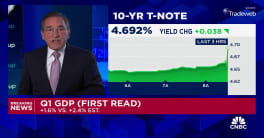In the second in a series of white papers exploring the "Foundation for a Sound Housing Market" CoreLogic looks at the Ability-to-Repay (ATR) and Qualified Mortgage (QM) standards that are due to go into effect on January 10. In addition to outlining and analyzing the two new rules put in place by the Consumer Financial Protection Bureau (CFPB) under the Dodd-Frank Wall Street Reform and Consumer Protection Act, the authors, Margarita S. Brose and Faith A. Schwartz, look at how lenders and servicers can actually benefit from the new rules.
CoreLogic views the two rules as carrying out two of President Obama's core principals to reform the nation's housing finance system and the vision articulated by Elizabeth Warren in her 2007 article "Unsafe at any Rate." The President, in August of this year said that putting private capital at the center of the housing finance system was his first core principal while another was to support affordability and access to homeownership for creditworthy first-time home buyers. Warren for her part proposed a regulated marketplace where the consumer of any type of consumer financial product would get the same protections as the purchaser of a toaster.
The paper reviews the events and excesses in lending that led to the financial crisis exemplified by lenders who were "willing to underwrite and sell limited documentation loans coupled with additional risk layering, which included higher loan-to-value lending, cash-out refinancing and teaser ARMs." The failure to review the borrowers' ability to repay at the time of origination had serious consequences not only for the borrower but for originators, servicers, and the investment communities. "The impact of the crisis on the economy can be measured in part by unemployment which peaked at 10.1 percent in 2010."
As the country heals from the recession and the housing system recovers "there are a number of opportunities to ensure the creation of a sound lending process that works for all parties." The roadmap to this sound marketplace, CoreLogic says, "Will rest on transparency, accountability, and traceability." Validation of consumer data and documentation, including material changes prior to funding a mortgage loan will lead to more confidence in the process. Consumers, originators, servicers and investors will benefit from the certainty and clarity the new QM and ATR rules will bring to the market, Bros and Schwartz say, as "we make our way toward attracting private capital and shrinking the government footprint in housing."
The QM and ATR rules attempt to put safeguards in place to prevent the making of complex, costly mortgages to borrowers who may not fully understand their obligations and lenders, servicers, and investors have been working to understand the impact of the rules. CoreLogic credits CFPB with being inclusive in its rulemaking but one concern is how to implement the rules.
Because the law still leaves some risk of litigation for lenders who work outside of the QM scope there is concern that the market can still meaningfully serve homeowners who may fall outside of those guidelines. Another worry is the uncertainty of investors' risk appetite for non-QM loans which may drive up pricing. By not including a down payment threshold in the QM rule CFPB preserved the opportunity for higher LTV loans to remain QMs when possible but there is still the question of how to meet the demand of first time homebuyers with low wealth but less risky credit profits who may have limited options within government homebuyer programs. There is also concern that the rules will limit or eliminate non-qualified products.
The authors see the ATR and QM rules as offering many possibilities to encourage private capital flows into housing finance because sound lending is good business. The rules will require lenders to review their existing processes and procedures, data validation, and counterparty tracking and surveillance. Traceable documentation will need to be maintained and CFPB will review it during examinations. Companies not familiar with regulatory reviews are the most apprehensive about the rule implementation, but a measured approach should address any anxiety about audits.
Lenders need to default to common sense when thinking about compliance; how best to adjust processes to validate how information was verified during underwriting and how to establish a clear audit trail. "When these issues are solved, the market will have confidence that the information and processes established to make a sound loan are likely to result in sound loan performance for the life of the loan."
In conclusion the authors ask what the non-QM market will look like. Some, they say, believe there will be no market and it is fairly certain that the pre-crisis style of lending will not return. Loans with no-to-low documentation will be few and far between and loans with DTI levels above the 43 threshold for QM loans will be hard to find. The Mortgage Bankers Association estimates that originations in 2014 will be one-third of the market "in the days 'when all loans made sense.'"
Schwartz and Brose say there are "many in the hedge fund world (who) will tell you that there is a nearly unlimited market for those who do not need the ordinary protections afforded the unsophisticated buyer." In the new ATR and QM world, lenders will still be able to offer loans to home purchasers who are investors and evidence an ability to repay but one outside the explicit requirements of the new rules. "While the QM rule provides regulatory safeguards for ordinary home buyers, it does not prevent a lender from making a non-QM loan." It does, however require that the lender make a sound risk assessment and have the documentation to support that assessment. "Accurate underlying mortgage data, servicer due diligence, and enforceable and consistent representations and warranties will be required for any entity engaging in non-QM lending, but the tools and data are available to make that a reality."







